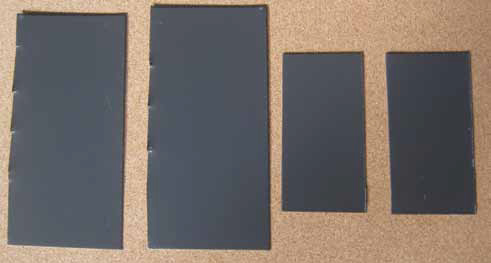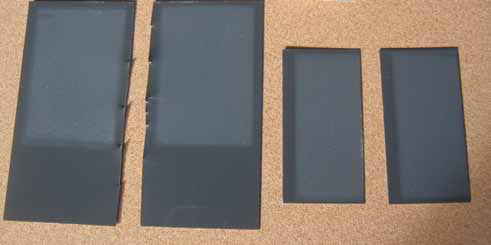Quality Of Imported Coil Coated Steel
Note: Dave Hall, Chairman, MRM Technical committee. Whilst the results from the samples tested showed that the best result was achieved by NZ made painted steel and the least durable was from an imported sample, we should not draw the conclusion that all NZ made products are better and all imported products are inferior.
However we do advise that it is better to use a product made in New Zealand for New Zealand conditions and backed by the warranty of a local manufacturer.
For some time NZMRM have been aware of imported prepainted steel being used to provide roofs which are then sold at lower prices than our members who are using painted steel made in New Zealand by Pacific Coil Coaters and New Zealand Steel.
While there could be several reasons for this, generally speaking the World steel market is quite competitive and it is unlikely that product of the same specification will be significantly different in cost. One reason could be that the steel used is of lower quality in some respect and so costs less from the
supplier.


Above: After 2000 hours of UV testing the NZ product showed no evidence of degradation compared with the imported product (below) tested under the same conditions.
Like all things you get what you pay for and while overseas suppliers can make quality goods, they will also reduce quality to make down to a price.
Is that what is happening here?
We have looked at ways to provide a measure of quality for our members to use when buying coil to prevent bad public opinion of painted steel roofs that can be caused by using badly performing raw materials.
There are several issues to consider with different outcomes.
The quality of the steel, its thickness and strength will determine how it performs in terms of its ability to span purlin spacings, its ability to withstand point load during installation and subsequent roof traffic and its ability to roll-form without distortion. We have seen cases in New Zealand where steel less than 0.4 mm has been used on house roofs resulting in damage, poor appearance, and complaints. Both thickness and strength are easily measured with no time delays, and so inadequate material can quickly be detected by testing or by the problems caused on the roof. These properties can be specified precisely and measured against these specifications.
The quality and thickness of the metallic coating will determine how well the coated steel performs in marine environments. While it is relatively easy to measure the metallic coating type and thickness, the effect of poor or thin coating normally takes some time to manifest itself on a roof, as corrosion, usually starting at the ends or laps. To some extent this can be assessed more quickly than in real life situations by doing accelerated corrosion testing which does allow comparisons between various materials (although it does not provide an accurate absolute prediction of real time life). The
properties of the metallic coating can also be specified quite precisely and can be analysed and measured reasonably easily and quickly.
The quality of the paint coating can assist the corrosion resistance but lower quality primarily shows up in fading or colour change under exposure to UV radiation (sunlight). New Zealand and Australia suffer from very severe levels of UV radiation, far higher than anywhere in Asia or Europe, and so paints
not formulated specifically for NZ conditions may suffer colour changes quite early in their lives and this is so visible it results in complaints from customers.
Here are a couple of examples.
Different colours perform differently, with lighter colours being less susceptible to fading, or at least fading is less noticeable. Unfortunately this is much more difficult to detect by specification, as paint companies are notoriously reluctant to reveal their paint formulas.
So, do we have a standard which can be used to specify painted steel quality?
It is AS/NZS 2728:2007 which has effect in both New Zealand and Australia. It specifies the types of environment that painted steel should be suitable for, and provides some exposure tests for both corrosion resistance and UV fading resistance.
The corrosion testing can be done by long-term exposure at recognised sites or by accelerated testing in a cabinet in which samples are exposed to corrosive (salt) sprays under various regimes simulating real life conditions. These can be done reasonably quickly although not cheaply. However, the resistance to corrosion is mostly provided by the metallic coating and the thickness and quality of this is governed by another standard, AS 1397, and so product can be required to comply with this and can be checked by measurement.
This leaves us with UV resistance – the property whose failure is most likely to be noticed quickly by roof owners.
AS/NZS 2728 unfortunately does not give us an easy solution as the current version only provides for real life exposure to UV which can take up to four years. This is because the standard, as it is, is intended to provide guidance to suitability for use under real-life conditions. Accelerated UV testing
will compare products and its value is in this comparison. While the outcome of accelerated UV testing does not provide more than an estimate of real-time life, it does provide a very good comparison between products. It can reliably predict which of a number of exposed samples will perform best in real life.
